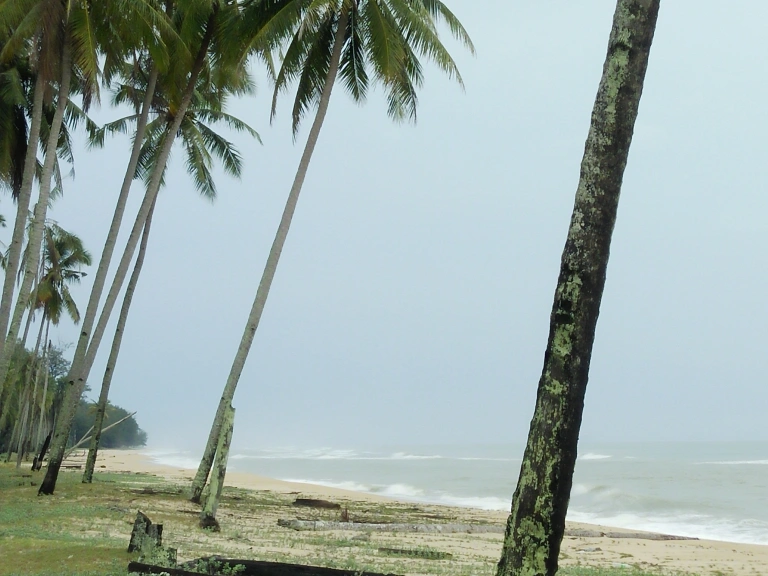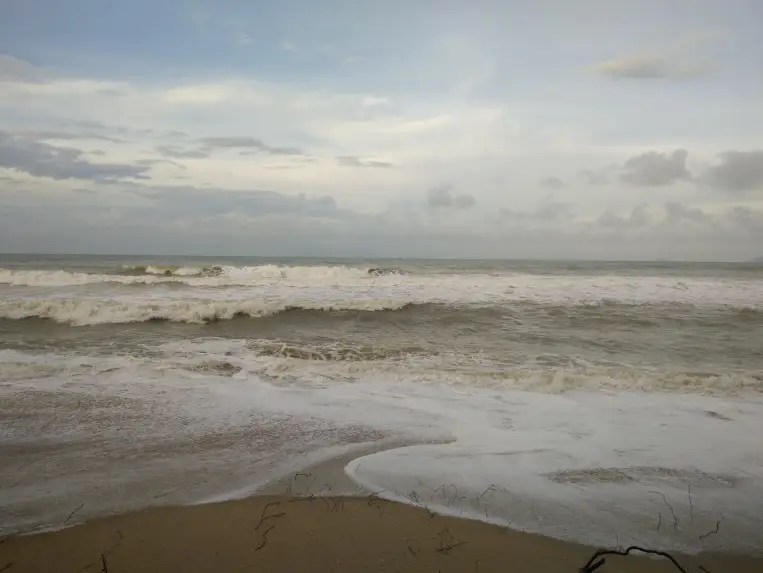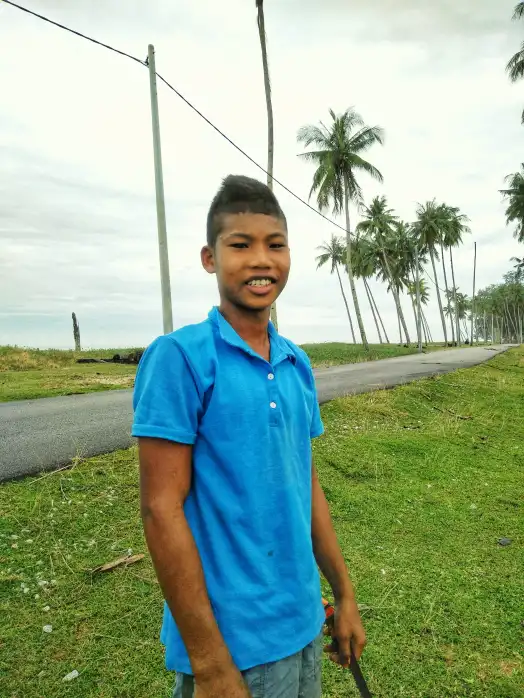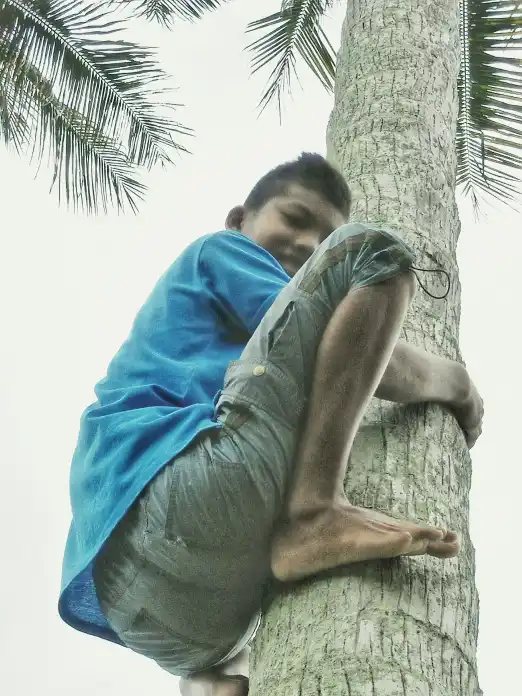Some say dreams are made of sun, sea , sand and coconuts, while some think a coconut is a definition of a taste of paradise. But where ever you are, the coconut has the ability to transport you to some beautiful tropical coastline in your mind. It is as if you were lying on some fine white sandy beach, sipping coconut water in beautiful Terengganu.
But do you know how much work goes into your coconut drink? And I don’t mean the sweat behind preparing some exotic coconut water cocktails in the bar or in the kitchen of a restaurant. I mean the hard work behind getting the coconuts off the trees, some reaching to more than 60 or 70 feet high. In coconut farms in Thailand, Sri Lanka, Indonesia, Malaysia, India, coconut farmers use monkeys to pick coconuts. Thailand took coconut plucking to the next level by having a Buddhist-inspired school in Surat Thani to train monkeys. The school it seemed is funded to teach monkeys how to pick coconuts without use of force or violence. The practice of using pig-tailed macaques to pick coconuts started since around 400 years ago. Malaysia too has a school in Padang Halban, Kelantan, run by a 63 year old grandfather, Wan Ibrahim Wan Mat (news.com.au, April 2018) to train macaques to pick coconuts.

Figure 1: Sun, Sea, Sand and Coconuts in Mangkuk, Penarik, Terengganu
But while travelling around Terengganu one morning, I came across a young man (not a macaque monkey) picking coconuts off a tree on a beach in Mangkuk (Fig 1). Mangkuk is a peaceful paradise, situated in between the Setiu River and the blue South China Sea. It is a mix of old and new – traditional Malay houses, with unvarnished timber aged by sea breeze laden with salts and resort-like concrete beach houses. It is populated by hundreds of swaying coconut trees, casuarinas, grazing cows and goats. Occasionally a kampong boy cycles past. The fine white sandy beach stretches from as far as the eyes could see, sometimes tainted by discarded plastic bottles. The breeze blows softly from the sea on most days. The monsoon months however (between November to February), bring endless rain, strong winds and raging seas (Fig 2). During the monsoons, the raging seas would mean fishermen would have to look for alternative source of income.

Figure 2: The angry sea during the monsoons, raging on the beaches in Kampong Telaga Papan, Chalok
I met a Malay gentleman, his hand holding on to a line dangling from the top of one coconut tree. As I looked up, I saw a boy perched on top of the tree. The boy would select specific bunches, tie them with the string, and the man on the ground would hoist the bunches safely down to the ground. This the boy would do for several times until he was satisfied there were no more nice pickings. He would work his way down while clasping the trunk with ease without the use of any gadget or safety harness. Then they would pick another two or three coconut trees to select more bunches of coconuts. It seemed that even though the coconut trees grow in land belonging to some land owner in the kampong, coconut plucking from these trees are a gesture of charity by the land owner.
I remember some 50 years ago, seeing one Indian man climbing a coconut tree in my own kampong. He would use a ring made from plant fibre, attached around his ankles before he started the climb. This ring would really hasten his climbing speed. But this Malay boy Amin did not use any gadget on his feet nor a safety harness on his body. Amin, probably 15 or 16 years old, was slim, with an athletic build and long limbs, browned by the tropical sun. He was fearless. He had been plucking coconuts since he was 14 years old, learning the art from his grandfather.

Figure 3: Amin picked coconuts off the trees in Mangkuk, Penarik, Terengganu
It seemed a monkey can pick about 1,600 coconuts a day in Thailand, and about 800 coconuts a day in Malaysia. A boy like Amin probably could pluck about 80 coconuts a day. But the difference is in the delivery and the target market. Monkeys throw down coconuts from the top of the tree, which could break the fruits. But climbers like Amin would deliver beautiful green coconuts safely in one piece, perhaps more for tourists like me to savour the coconut water.

Figure 4: Amin happily climbing down the coconut tree with no harness of any kind.
But would you pluck coconuts for the money? Maybe, if it is the only means of earning a few ringgit a day. But plucking coconuts may not be for the faint-hearted though…
